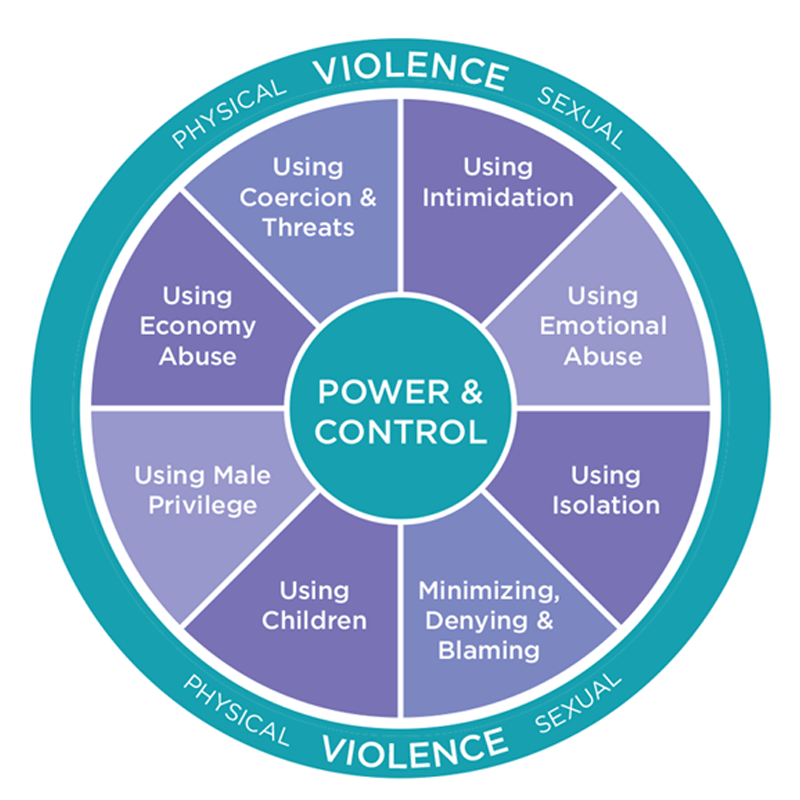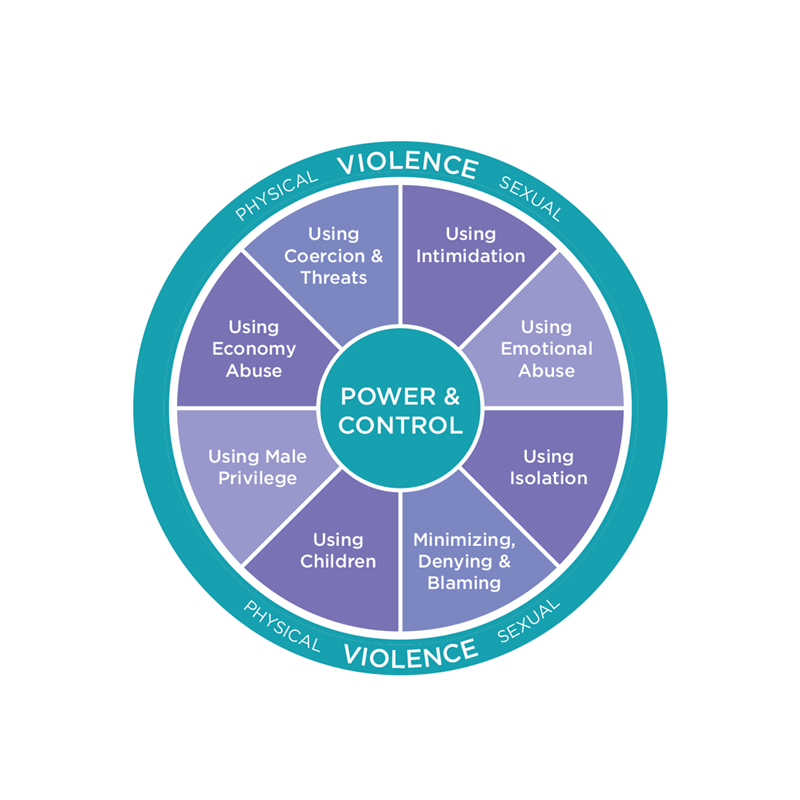Domestic Violence
Power and Control
Domestic violence is a pattern of behavior used to gain or maintain power and control over an intimate partner. Behaviors include physical harm, causing fear, preventing a partner from doing what they wish, or forcing them to behave in specific ways. People of all races, ages, sexual orientations, religious affiliation or gender can be a victim - or perpetrator - of domestic violence. It can happen to people who are married, living together or who are dating.


Power and Control Wheel
We use this diagram to educate victims and community members of the tactics an abuser uses to maintain control of their victim.
Types of Domestic Abuse
In addition to physical abuse, abuse takes a number of other forms. If you are in a relationship where any of these are present do not take them lightly, these are red flags that a relationship isn’t what it should be. It should be a catalyst to get out of a relationship before it is too late. Connect with us to talk through your situation and a plan for your safety.
Intimidation
Looks, actions or gestures to instill fear in you. Smashing or destroying things that are important to you, in your presence. Abusing pets that are important to you. The displaying of weapons can be another form of intimidation.
Emotional
Constant put-downs, making you feel bad about yourself, calling names, playing mind games, making you feel guilty about overreacting to an incident. These are red flags and should be noted that a relationship is an abusive one.
Isolation
Controlling everything you can and cannot do. Dictating who you see, where you go and using jealousy to justify their abusive actions. Abuse can be minimizing, denying and blaming.
Using Male Privilege
Treating you like a servant, making all the big decisions, acting like the "master of the castle" and being the one to define men’s and women’s roles.
Economic
Preventing you from getting or keeping a job, making you ask for money or taking your money, and not letting you know about or have access to the family income.
Digital
Telling you who you can and cannot be friends with on social media or monitoring your social media activity closely. Monitoring your other online activities by requesting passwords, checking your phone or reviewing browsing history.
Coercion and Threats
Making or carrying out threats to do something to hurt you, threatening to commit suicide or report you to welfare. An abuser will promise not to do it again and assure you, you are overreacting.
Using Children Against You
Making you feel you are a bad parent, using the children to relay ugly messages you, threatening to take your children away. All of what abuse is, isn’t just to do with what you can see. It is also what you don’t see.
1 in 4 women and 1 in 9 men experience severe intimate partner physical violence.
Women between the ages of 18-24 are most commonly abused by an intimate partner.
Protect You and Your Children
Access our guidelines to keep you safe before and after you leave your abuser.
Warning Signs in a New Relationship
Gauging whether a person has abusive tendencies can be difficult, especially in a new relationship. Monitor these warning signs, especially if multiple signs are present, it should be your sign to get out of the relationship.
No Respect for Your Boundaries
If they want to move too quickly in your relationship while insisting you forgo time with family and friends, you should be concerned. They may also contact you excessively though the day as they want to know where you are at all times. Excessive jealousy is also very common.
Disrespectful
They are critical or regularly say awful things about you like you’re "crazy," "stupid" or "fat" in an effort to convince you no one else would ever love you.
Lack of Responsibility and Control
They take no responsibility for their behavior and blames others if they rage out of control or act impulsively.
Inconsistent Past
Despite a number of failed previous relationships they seem "too good to be true" because they blame their failures on their partners. Be mindful of their history and whether they've abused a partner in the past or grew up in a household with abuse.
We Can Help
If you are in an abusive relationship we can help create a safe exit plan and emergency shelter if you need a place to go. We can also assist in obtaining a protection order to keep your abuser away from you and your children.
The Spillover of Domestic Violence
Domestic violence does not stay home when the victim leaves for the day and it's important we as a community understand this spillover. Domestic violence follows victims to the grocery store, school, children’s activities and work. Victims may skip work and lose their job for fear their abuser will attack their children while they are at work. Abusers may also show up at work and the violence can escalate quickly. Domestic violence is not just a victim’s issue, but a community issue and it is important that we are educated. If you’d like more information on this topic please contact us.
